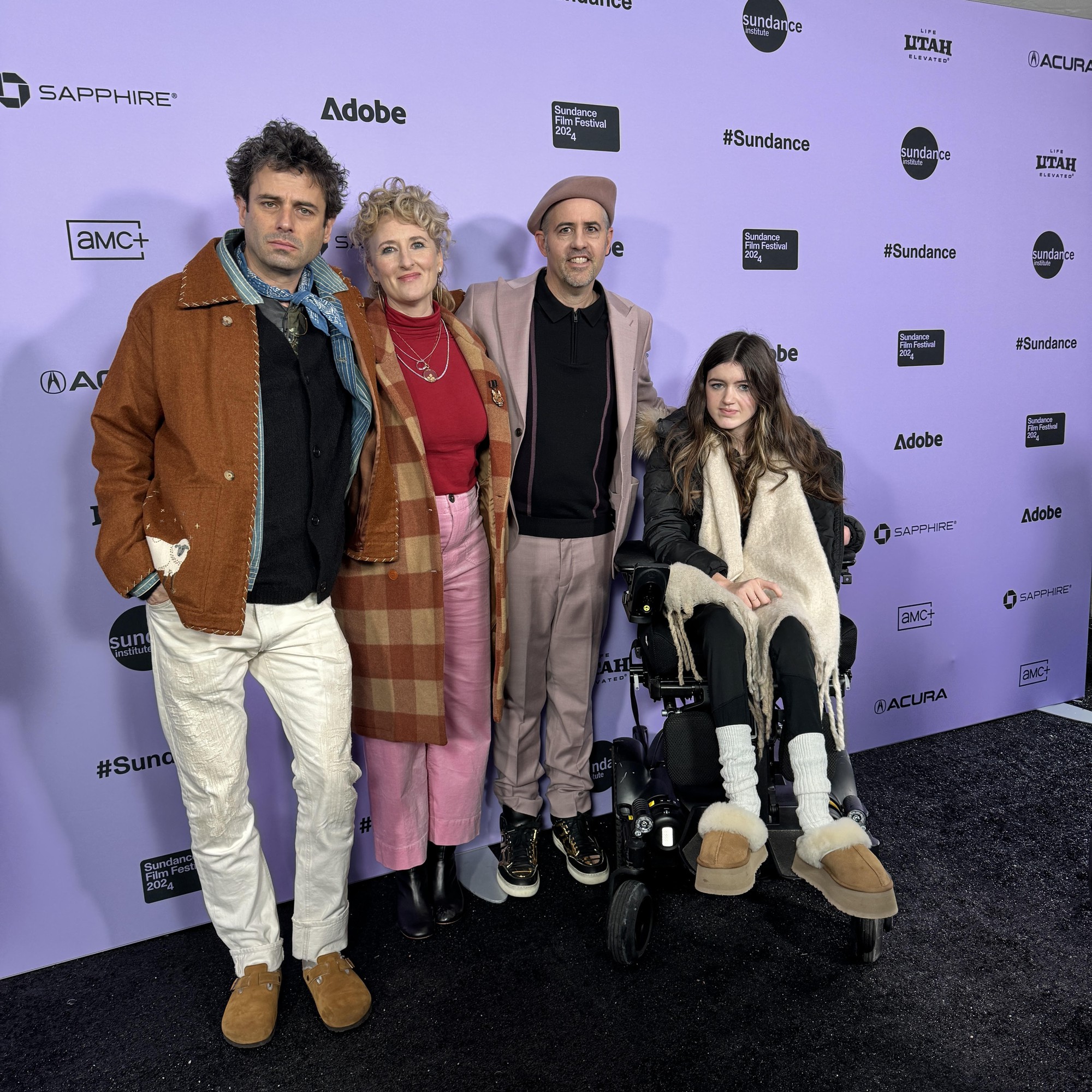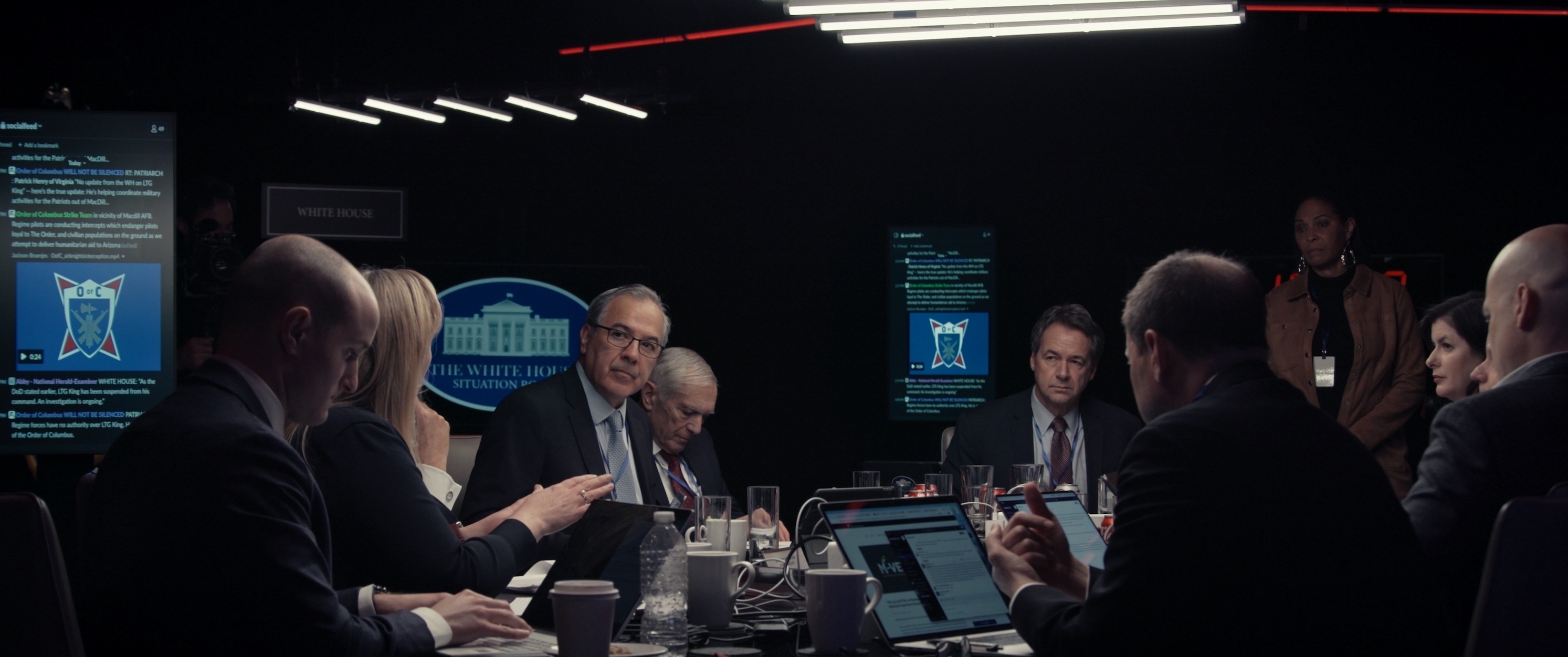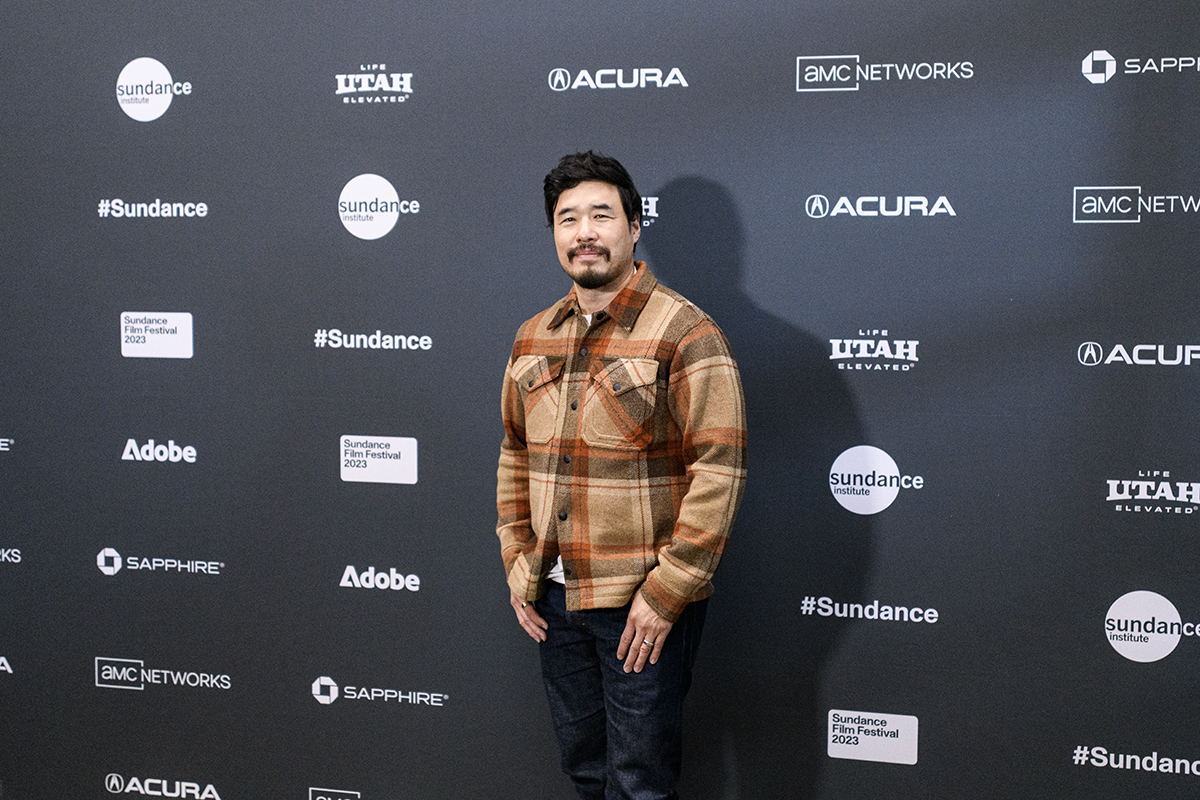Sundance 2024: Alumnus Michael Fitzgerald talks progress in representing disability on screen

Actor Luke Kirby, director Amber Sealey, production designer Michael Fitzgerald and actress Phoebe-Rae Taylor take a photo at the Sundance premiere of “Out of My Mind.” Alumnus Fitzgerald said he sought to accurately portray life with cerebral palsy through his visual designs. (Courtesy of Michael Fitzgerald)
By Sydney Gaw
Jan. 25, 2024 1:11 p.m.
This post was updated Jan. 25 at 7:46 p.m.
Behind the scenes of the upcoming Disney+ film “Out of My Mind,” alumnus Michael Fitzgerald is changing the way viewers perceive disability in the film industry.
“Out of My Mind” premiered at this year’s Sundance Film Festival and is expected to release this fall. Based on Sharon M. Draper’s 2010 novel of the same name, “Out of My Mind” chronicles the life of a young girl diagnosed with cerebral palsy. Although 11-year-old Melody Brooks cannot walk or talk, she has an extraordinary mind and a photographic memory that reveals she has an astounding intelligence. As she becomes increasingly frustrated with the lack of challenge in her special education class, Melody refuses to be defined by her disability and is determined to communicate what she wants. Production designer Fitzgerald said the film stands out from other films depicting individuals with disabilities by centering Melody’s perspective.
“What’s great about the film is it’s really from the eyes of our lead character,” Fitzgerald said. “Sometimes we’re just really looking from Melody’s point of view, which is fun. That meant everything had to be really specific and really beautiful and really crafted and really thought-out. Because she’s nonverbal, … there’s a mentality … that she doesn’t have a lot going on in her head. But of course, her parents know she’s really, really smart.”
[Related: Emmys 2024: Alumnus Jerry Henry shares his experience working on ‘The 1619 Project’ docuseries]
As the project’s production designer, Fitzgerald said he was responsible for creating a lot of the film’s set designs, as well as costumes and other visual elements. In many of the creative discussions, Fitzgerald said, the focus was on accurately portraying Melody’s experience with cerebral palsy and bringing her complex understanding of the world around her to life.
From manipulating the visual elements in Melody’s classrooms to mirror her transition to a more advanced class, to curating scenes that reflect her gaining a sense of agency when her peers start to recognize her brilliance, Fitzgerald said he and director Amber Sealey worked hard to capture Melody’s vibrant and complex personality in her surroundings. This endeavor relied heavily on cultivating an environment that was accessible to everyone involved in the project, Sealey said.
“We were an entirely accessible production, and what that meant was that if any of our cast or crew needed something, … we would provide that,” Sealey said. “It’s not very common that you make a set that’s 100% accessible, and it turned out to be really easy.”
A longtime friend and frequent collaborator of Fitzgerald’s, Sealey said she has great admiration for his creative ingenuity. While referring to him as “Fitzy,” Sealey said she and Fitzgerald both agreed that the film should have an astute specificity in its details while contributing to the film’s larger focus on connection and authenticity.
Authenticity and accuracy were crucial to the production of “Out of My Mind,” Sealey said. After spending time with many consultants on the film, including families of individuals with cerebral palsy, Sealey said she and Fitzgerald tried to incorporate as many real-life details into the set design as possible, such as wheelchair scratches along the walls and baseboards of Melody’s home. Fitzgerald was especially keen on making sure Melody’s home realistically portrayed the Brooks’ financial situation, Sealey said.
Another important detail Fitzgerald said he took into consideration was the configuration of certain household appliances that a family might alter to accommodate their child’s needs. One such example was the removal of the fronts of kitchen drawers so actress Phoebe-Rae Taylor, who played Melody, could easily grab utensils from the set.
“Amber and I did a lot of great research with some families who also have some of these exact same experiences. … One thing – when you have a chair (wheelchair) in your house, you don’t have things in the middle of the room,” Fitzgerald said. “Just something as simple as that. … It was great to get all those tiny details.”
A crucial part of his role was bringing the visions of Sealey, Draper and the rest of the creative team together, Fitzgerald said. When the story’s visuals were complete, he said one of the most gratifying experiences was seeing Taylor interact with the set and have fun with the props he had created. Fitzgerald said he is excited for audience members to see the visual work that he and his team crafted from scratch and understand the world from Melody’s point of view.
“I want you (viewers) to appreciate the planetarium and the Whiz Kids (scenes),” Fitzgerald said. “And I want you (viewers) to take away, when you look at somebody in a chair, … think about empathy. … Melody – her character really allows us to think about somebody in a chair with a disability in a different way.”
[Related: Part 2 of 2023 Hollywood Diversity Report evaluates representation on TV]
One of the film’s cerebral palsy consultants, Thomas Ellenson, played an integral role in informing the production, Fitzgerald said. Early on in the production process, producer Peter Saraf brought Ellenson onto the project to share his experience living with cerebral palsy and ensure that the augmentative and alternative communication portrayal was true to the early 2000s time period in which the film is set.
“(The production team) really put in the effort to make sure that disability, accessibility and representation were done right, both on set and on camera,” Ellenson said in an emailed statement. “I believe that the representation you see in the movie is true. It is one of the first movies of this scale that has this kind of representation. … As a consultant, I felt like I was taken seriously, and my input can be seen in the movie. I’m so excited to see what people think about it.”
In particular, Ellenson said in the statement that he and Fitzgerald worked together to create the augmentative and alternative communication device that Melody uses. According to Ellenson, the device was an important prop in the film, and its authenticity was a true mark of Fitzgerald’s skill in recreating an accessibility tool that would be very close to what Melody uses in the book.
Along with Sealey and Ellenson, Fitzgerald said he looks forward to seeing the film’s representation of disability on screen. Just as Draper’s original novel made groundbreaking progress for disability representation in children’s fiction at the time of its publication, Fitzgerald said he is eager for “Out of My Mind” to bring a fresh and more diverse perspective on cerebral palsy representation to Hollywood and the film industry. In preparation for the premiere of “Out of My Mind,” Sealey said she hopes the message of the film will resonate with a large audience.
“My hope is that having this movie premiere at such a prestigious festival (Sundance) will ideally draw a lot more audience to the film,” Sealey said. “I really hope that people walk away from the film with a different concept of what it means to communicate, and maybe having more of an open mind and an open heart towards somebody who might look or act or communicate differently than you do.”






